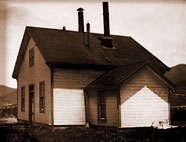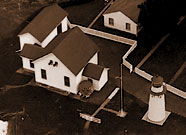

Large bells were also used quite often as fog signals at the locations
of lighthouses and on lightships, as well. Even though they had to be
rung manually, either by a hammer or an internal clapper, many bells were
retained as reliable backups after horns and sirens replaced them. Eventually,
devices such as the Steven's fog bell helped to automate the ringing of
a bell at set intervals. Today, foghorns usually produce their sounds
electronically or by releasing quick blasts of air. These modern sound
signals assist in navigation by providing a distinct combination of sounds
to help alert ships of where they are or guide them where they need to
go.
